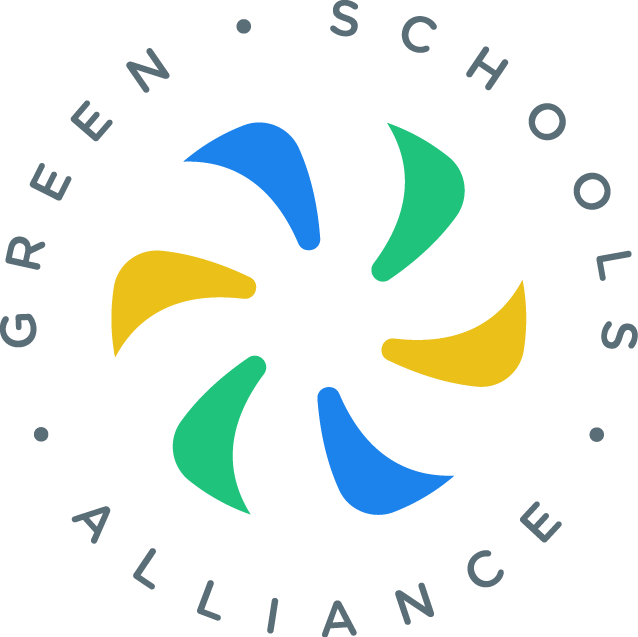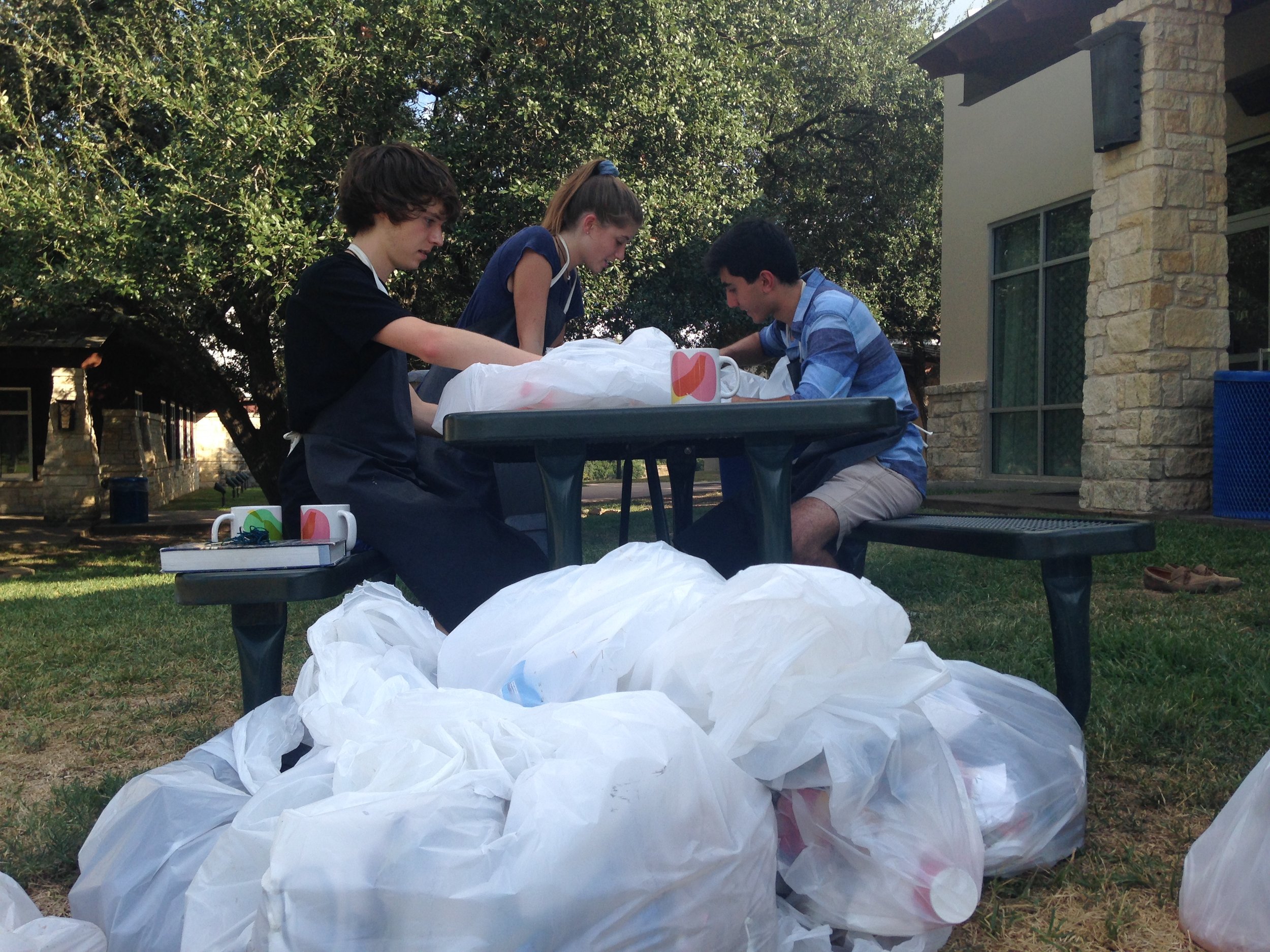Lessons in Launching School Sustainability Programs
Dina Tucker has launched successful sustainability programs at schools in the USA and Bangladesh.
After a school-wide, student-driven Waste Audit at St. Andrews College (Texas, USA), only a single ziplock bag of trash ended up heading for landfill.
Dina emphasizes the key role of students in sustainability initiatives.
Starting with something visible, with tangible results, is an ideal way to launch school sustainability programs.
Dina Tucker has had success in starting school sustainability programs from the ground up in both Texas, USA and Dhaka, Bangladesh. In a conversation with the GSA, she shares invaluable insights gleaned from her diverse experiences.
Dina's journey in fostering sustainability in schools began with a modest paper recycling initiative at a school in Texas, U.S.A. Initially, there was little organization or leadership around the recycling program, so she got stuck into really establishing it, “to have something that’s really visible.”
A pivotal moment came when she attended the EC3, the GSA’s Educator’s Climate and Conservation Consortium, West Virginia, where she gained a transformative perspective on sustainability and encountered the Whole School Sustainability Framework. "The Whole School Sustainability Framework is such a powerful tool to just really visually help people understand all the different components of sustainability as it applies in schools.”
Upon returning, armed with newfound knowledge, Dina embarked on a mission to revolutionize her school's sustainability efforts. “Bringing that back, and being able to understand the importance of metrics and communication – that was really the point at which our program took off. There was a lot of education that would go in with the facilities [improvements], and we went from recycling to composting in the cafeteria, to school-wide composting. It was mostly powered by students, starting with campus-wide audits."
With the help of Facilities, they collected every single piece of trash on campus, and then, with students, sorted it into recycling, composting, and actual waste. By the end of it, they found they had a bag – “not a garbage bag, but a single quart-sized Ziploc bag, of material to go to landfill. This was for a school of four to five hundred students and teachers across the whole campus.”
Initially, the school had a tiny composting bin, small recycling bin and large landfill bin. Through the Waste Audit, “by looking at the waste and how it moved around, we were able to double the size of the compost bin to double the size of the recycling bin. And then we really dropped the size of the waste bin. And that ended up saving the school quite a bit of money because you pay more for waste.”
Dina’s next project was involving her school in the GSA’s Green Cup Challenge (GCC), which provided an opportunity to demonstrate the financial benefits of going green, and transforming the school’s understanding of sustainability. The GCC helped her, as well as her facilities personnel and students, to “understand something simple, like where all of the power meters were.” They discovered that they had some classrooms that had their own power meters. “We convinced the school to give us money to replace all of the lights in those rooms with LED lights. And then we tracked the power usage for that small room and it ended up paying for itself in a few months. And so using that data, we then converted all of the metal-halide gym lights into LEDs.”
Momentum came with demonstrating tangible results in a focused sustainability effort. “We were able to get more and more traction, because we could really show how we were saving the school money with a small initial investment. The turnaround time on that project was around 16 months, and it paid itself off in around 8 months through the energy saved.”
Since launching a successful sustainability program in Texas, Dina has taken on the role of Head of Science at a school in Bangladesh that has a strong vision for sustainability. At the American International School of Dhaka, whose mission is to ‘Prepare students to become stewards of a just and sustainable world’, Dina is working to help her school develop a comprehensive sustainability program. To do this, she is leveraging what she’s already learned through her past successes, and using the GSA’s Whole School Sustainability Dashboard, START: Sustainability Tracking, Analytics & Roadmap Tool.
Dina realized, “We need to measure things and we need to do it methodically.” Her school was already engaging in sustainability efforts, but there had been no comprehensive assessment of their activities. “How would we know what already existed in classrooms? What were teachers already doing? And how do we know that we’re doing the things we need to do to improve?”
Dina knew she needed to start with transforming the way people thought about sustainability. “Knowing what I knew about people's perception of what sustainability is, versus the reality of what it is, that's what I started with.” She gathered 21 teachers in an initial, hour-long session to get them thinking about sustainability. They were divided into three groups, one for each pillar of Whole School Sustainability: Educational Programs, Organizational Culture, and Physical Place. She then set them to start thinking about and brainstorming all the different sustainability-related things their school had done in the past, and was currently doing. Dina also provided a reference document containing START’s Whole School Sustainability metrics, to stimulate ideas and conversations.
Her next course of action is to work with staff to establish their sustainability baseline. “I knew that establishing a baseline needed to be our first course of action. We need to measure things and we need to do it methodically.” Dina and her team will be using START to benchmark, track and organize their Whole School Sustainability progress, and to identify what her school can already celebrate.
Dina’s next goal is to ramp up communicating about her school’s sustainability efforts. In fact, according to The Whole School Sustainability Framework, “Communication is the primary tool for inspiring change, sharing the vision, prompting new behaviors, and recognizing accomplishments. Any effort to create change requires communication through a variety of channels with a clear and consistent message.”
Dina notes, ‘I know we need to get a baseline for where we're at so that we can communicate our progress’. By benchmarking through START, ‘we’ll have documentation and we’ll just start with championing the places that already exist’. Dina plans to do this by adding a sustainability section to the school website and by communicating their school’s sustainability progress in their regular newsletter - “this is what we do, this is how we know, and starting to amplify some of the existing programs.”
On the efficacy of external sustainability audits, Dina emphasizes the imperative of the school perspective, otherwise the outcome will be “limited in its efficacy as a communication tool. You can say that you did it… but what I've begun to understand when I went through this process last time is that if it's not done from the student and teacher perspective, then it's going to be limited in its application.”
Dina's journey exemplifies the potential for positive change when individuals like her take the lead in fostering sustainability. Her story is a reminder that with dedication, knowledge, and the right tools, schools can become beacons of sustainability, preparing students and staff to be stewards of a just and sustainable world.
References:
Barr, S., Cross, J., Dunbar, B. (2014). The Whole School Sustainability Framework. Retrieved from Institute for the Built Environment at Colorado State University website: http://centerforgreenschools.org/Libraries/Publications/Whole-School_Sustainability_Framework.sflb.ashx
Dina’s journey demonstrates the power of grassroots initiatives and charismatic sustainability champions such as herself. Key lessons for schools on their sustainability journeys are can be summarized as:
Begin with a focused project with demonstrable benefits (e.g. energy savings from switching to LEDs; student-driven waste-audits to reduce landfill collection)
Prioritize communication as a key tool for inspiring change and recognizing accomplishments in sustainability efforts.
Transform the understanding of sustainability (e.g. sustainability saves money).
Engage the whole school community (such as Dina’s brainstorming workshop with teachers, and how students conducted waste audits).
Establish a clear vision and mission for sustainability within the school community.
Use tools like the Whole School Sustainability Dashboard (START) to methodically measure, track and plan for progress.





